Textbook Racism
How scholars sustained white supremacy
Image: A drawing by Hanson Booth in “The Development of America,” by Fremont P. Wirth (American Book Company, 1937). The caption reads in part: “Slaves at home, after the day’s work was over. Negroes always have been fond of singing and dancing.”
(The Chronicle of Higher Education) There it sat on a library cart with 50 other elementary, grammar, and high-school history textbooks, its bright red spine reaching out through time and space. As I opened the book’s crisp white pages, it all came back. My loud gasp startled those near me at the special collections department of Harvard University’s Monroe C. Gutman Library. Exploring the New World — published repeatedly between 1953 and 1965 — had been assigned in my fifth-grade social-studies class in Saratoga, Calif.
As part of a broader study of the legacy of the antislavery movement and the rise of the modern civil-rights era, I wanted to assess how abolitionism had been presented in textbooks. I imagined a quick look. Instead, I found myself immersed in Harvard’s collection of nearly 3,000 U.S. history textbooks, dating from about 1800 to the 1980s. Without intending, I had become engaged in a study of how abolitionism, race, slavery, and the Civil War and Reconstruction have been taught for generations.
After reviewing my first 50 or so textbooks, one morning I realized precisely what I was seeing, what instruction, and what priorities were leaping from the pages into the brains of the students compelled to read them: white supremacy. One text even began with the capitalized title: “The White Man’s History.” Across time and with precious few exceptions, African-Americans appeared only as “ignorant negroes,” as slaves, and as anonymous abstractions that only posed “problems” for the supposed real subjects of history: white people of European descent. (more)
A Visit To Topeka: Reflecting On Linda Brown’s Legacy
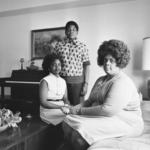
In this April 30, 1974, file photo, Linda Brown, right, and her two children pose for a photo in their home in Topeka, Kan. Brown, the Kansas girl at the center of the 1954 U.S. Supreme Court ruling that struck down racial segregation in schools, died March 25 at age 75. (AP)
(Texas Public Radio) I never met Linda Brown in person. But like many Americans I knew her story. And her death on Sunday reminded me that, in 1996, my NPR colleague and producer Walter Ray Watson and I spent several days in Topeka, hoping to find another layer to Linda’s story and her role in the Supreme Court’s historic Brown v. Board of Education ruling.
I’ve been reporting on school segregation — and desegregation — for years and Brown’s passing reminded me of this visit to the place where, in a sense, this story began.
I remember driving down the tree-lined streets of the racially mixed neighborhood where Linda lived with her family in the 1950s, a mostly blue-collar and middle-class neighborhood of office workers, merchants and lawyers.
The Rev. Oliver Brown, his wife, Leola, and their children lived just a few blocks from Sumner Elementary School, the whites-only school that, back then, had barred African-American kids from enrolling. (more)
UT’s Briscoe Center Acquires Stephen Shames Photographic Archive
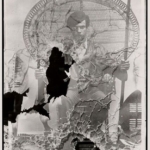
A Black Panther Party office window in Oakland shattered by bullets. (Stephen Shames Photographic Archive)
The Briscoe Center for American History has acquired the photographic archive of Stephen Shames. Perhaps best known for his role as the Black Panther Party’s photographer between 1967 and 1973, Shames has also documented many political and social issues over a 50-year career.
“Shames has used his camera to document the intimate histories of a wide range of subjects, including black political activism in the Bay Area, everyday life in New York City, and child poverty across America,” said Don Carleton, executive director of the Briscoe Center. “His archive will not only be preserved here at the center, it will be actively utilized in our mission to foster exploration of the American past, which is why a selection of his work prints is currently on display in the center’s exhibit hall.”
Shames was born in Cambridge, Massachusetts, but grew up in California. He began working as a photojournalist in 1967, covering local protests and unrest in the Bay Area while still a student at the University of California, Berkeley. That same year he became a photographer for the Black Panther Party after meeting its co-founder Bobby Seale at an anti–Vietnam War demonstration. (more)
TIPHC Bookshelf
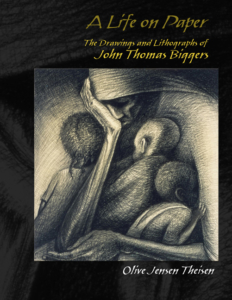 Published scholarship on black history in Texas is growing and we’d like to share with you some suggested readings, both current and past, from some of the preeminent history scholars in Texas and beyond. We invite you to take a look at our bookshelf page – including a featured selection – and check back as the list grows. A different selection will be featured each week. We welcome suggestions and reviews. This week, we offer, “A Life on Paper: The Drawings and Lithographs of John Thomas Biggers,”by Olive Jensen Theisen.
Published scholarship on black history in Texas is growing and we’d like to share with you some suggested readings, both current and past, from some of the preeminent history scholars in Texas and beyond. We invite you to take a look at our bookshelf page – including a featured selection – and check back as the list grows. A different selection will be featured each week. We welcome suggestions and reviews. This week, we offer, “A Life on Paper: The Drawings and Lithographs of John Thomas Biggers,”by Olive Jensen Theisen.
John Thomas Biggers (1924–2001) was a major African American artist who inspired countless others through his teaching, murals, paintings, and drawings. After receiving conventional art training at Hampton Institute and Pennsylvania State, he had his personal and artistic breakthrough in 1957 when he spent six months in the newly independent country of Ghana. From this time forward, he integrated African abstract elements with his rural Southern images to create a personal iconography. His new approach made him famous, as his personal discovery of African heritage fit in well with the growing U.S. civil rights movement. He is best known for his murals at Hampton University, Winston-Salem University, and Texas Southern, but the drawings and lithographs that lie behind the murals have received scant attention—until now.
Theisen interviewed Dr. Biggers during the last thirteen years of his life, and was welcomed into his studio innumerable times. Together, they selected representative works for this volume, some of which have not been previously published for a general audience. After his death in 2001, his widow continued to work closely with Theisen, resulting in a book that is intimate and informative for both the scholar and the student.
“Dr. Theisen had unequalled access to Dr. Biggers’ widow, as well as many of his friends and family. This unprecedented access gives the book a completeness and readability that sets it apart from other literature about the artist and gives the reader a sense of the character of the man as well as of his art. Its charm and readability will appeal to a wide range of readers.”—R. William McCarter, Regents Professor Art, University of North Texas
This Week in Texas Black History
Apr 9
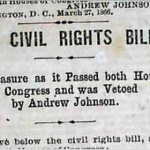 On this day, the Civil Rights Act of 1866 became effective, granting citizenship and the same rights enjoyed by white citizens to all male persons in the United States “without distinction of race or color, or previous condition of slavery or involuntary servitude.” President Andrew Johnson‘s veto of the bill was overturned by a two-thirds majority in both houses of Congress, and the bill became law.
On this day, the Civil Rights Act of 1866 became effective, granting citizenship and the same rights enjoyed by white citizens to all male persons in the United States “without distinction of race or color, or previous condition of slavery or involuntary servitude.” President Andrew Johnson‘s veto of the bill was overturned by a two-thirds majority in both houses of Congress, and the bill became law.
Apr 9
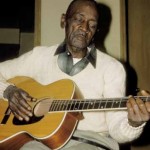 On this day in 1895, blues singer and guitarist Bowdie Glenn Lipscomb was born in Navasota. As a youngster, Lipscomb would take the name “Mance,” short for “Emancipation,” the name of an elder family friend. Lipscomb, who preferred to be known as a “songster” because of the variety of songs he sang, was discovered and first recorded in 1960 during the country blues revival. The annual Navasota Blues Festival is held in his honor. A bronze sculpture of him was unveiled in Mance Lipscomb Park in Navasota on 2011.
On this day in 1895, blues singer and guitarist Bowdie Glenn Lipscomb was born in Navasota. As a youngster, Lipscomb would take the name “Mance,” short for “Emancipation,” the name of an elder family friend. Lipscomb, who preferred to be known as a “songster” because of the variety of songs he sang, was discovered and first recorded in 1960 during the country blues revival. The annual Navasota Blues Festival is held in his honor. A bronze sculpture of him was unveiled in Mance Lipscomb Park in Navasota on 2011.
Apr 10
 Golfer Lee Elder, a Dallas native, became the first African-American to play in the Masters Tournament on this day in 1975. Leading to the tournament, Elder endured hate mail that said he would never make it to Augusta and that he should “watch your step when you get to Augusta,” and that “there will be blood.” Undaunted, Elder competed in the tournament, but missed the cut after shooting 152 (8-over par) for the first two rounds.
Golfer Lee Elder, a Dallas native, became the first African-American to play in the Masters Tournament on this day in 1975. Leading to the tournament, Elder endured hate mail that said he would never make it to Augusta and that he should “watch your step when you get to Augusta,” and that “there will be blood.” Undaunted, Elder competed in the tournament, but missed the cut after shooting 152 (8-over par) for the first two rounds.
Apr 12
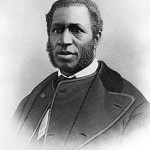 Richard Harvey Cain was born on this day in 1825 in Virginia to free parents. Cain was a political and civic leader of the Charleston, South Carolina reconstruction era. In 1848, he joined the African Methodist Episcopal Church and was a minister in Muscatine, Iowa. He became a bishop of the church in 1880 and was assigned to the Louisiana and Texas district. That same year, he helped found Paul Quinn College in Austin, serving as the school’s president until 1884.
Richard Harvey Cain was born on this day in 1825 in Virginia to free parents. Cain was a political and civic leader of the Charleston, South Carolina reconstruction era. In 1848, he joined the African Methodist Episcopal Church and was a minister in Muscatine, Iowa. He became a bishop of the church in 1880 and was assigned to the Louisiana and Texas district. That same year, he helped found Paul Quinn College in Austin, serving as the school’s president until 1884.
Apr 13
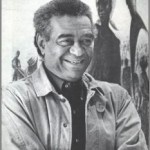 On this date in 1924, internationally acclaimed artist, sculptor, teacher and philosopher John Biggers was born in Gastonia, North Carolina. After studying at Hampston Institute and Penn State University, Biggers moved to Houston in 1949 and became founding chairman of the art department at Texas Southern University, then called Texas State University for Negroes. He held the position for 34 years during which he initiated a mural program for art majors in which every senior student was expected to complete a mural on campus: there are now 114 such murals on the Texas Southern campus. In 1957, with the help of a grant from UNESCO (United Nations Educational, Scientific and Cultural Organization), Biggers was one of the first American black artists to visit Africa to study African traditions and culture.
On this date in 1924, internationally acclaimed artist, sculptor, teacher and philosopher John Biggers was born in Gastonia, North Carolina. After studying at Hampston Institute and Penn State University, Biggers moved to Houston in 1949 and became founding chairman of the art department at Texas Southern University, then called Texas State University for Negroes. He held the position for 34 years during which he initiated a mural program for art majors in which every senior student was expected to complete a mural on campus: there are now 114 such murals on the Texas Southern campus. In 1957, with the help of a grant from UNESCO (United Nations Educational, Scientific and Cultural Organization), Biggers was one of the first American black artists to visit Africa to study African traditions and culture.
Apr 13
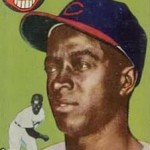 On this day in 1952 David Hoskins started for the Dallas Eagles making him the first black player in the Class AA Texas League. The Eagles were affiliated with the Cleveland Indians. Hoskins was born in Greenwood, Mississippi, on August 3, 1925 but moved to Flint, Mich. with his family in 1936. He played for the Homestead Grays in the Negro American League and in 1948 broke a color barrier as an outfielder with Grand Rapids of the Central League. With the Eagles, Hoskins was an immediate draw and by the season’s end had pitched before sellout crowds at every stadium in the league and led the league in wins (22), complete games (26), innings pitched (280), and had an ERA of 2.12. He also hit .328 and was an all-star selection. He was inducted into the Texas League Hall of Fame in 2004. In 1953, Hoskins was signed by the Indians and played for two seasons, 1953-54. For his Major League career, Hoskins was 9-4 with a 3.81 ERA and .227 batting average.
On this day in 1952 David Hoskins started for the Dallas Eagles making him the first black player in the Class AA Texas League. The Eagles were affiliated with the Cleveland Indians. Hoskins was born in Greenwood, Mississippi, on August 3, 1925 but moved to Flint, Mich. with his family in 1936. He played for the Homestead Grays in the Negro American League and in 1948 broke a color barrier as an outfielder with Grand Rapids of the Central League. With the Eagles, Hoskins was an immediate draw and by the season’s end had pitched before sellout crowds at every stadium in the league and led the league in wins (22), complete games (26), innings pitched (280), and had an ERA of 2.12. He also hit .328 and was an all-star selection. He was inducted into the Texas League Hall of Fame in 2004. In 1953, Hoskins was signed by the Indians and played for two seasons, 1953-54. For his Major League career, Hoskins was 9-4 with a 3.81 ERA and .227 batting average.
Apr 14
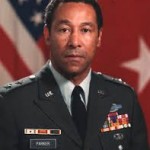 On this day in 1935, Julius “Jay” Parker, Jr. was born in New Braunfels. Parker attended Prairie View A&M University where he completed the Reserve Officers Training Corps curriculum in 1955. Parker rose to the rank of major general and became the highest ranking African-American Military Intelligence Officer in the history of the U.S. Army. He is also a direct descendant of Quanah Parker, the last chief of the Comanche nation.
On this day in 1935, Julius “Jay” Parker, Jr. was born in New Braunfels. Parker attended Prairie View A&M University where he completed the Reserve Officers Training Corps curriculum in 1955. Parker rose to the rank of major general and became the highest ranking African-American Military Intelligence Officer in the history of the U.S. Army. He is also a direct descendant of Quanah Parker, the last chief of the Comanche nation.
Apr 14
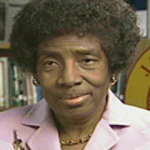 Born in Houston on this day in 1938, Gloria Dean Randle Scott became the first African-American president of the Girl Scouts of America. A civic and educational leader, she took the post in 1975. Scott graduated from Jack Yates High School and received post graduate degrees, including education, from Indiana University. She had been a Junior Girl Scout at and later served as President of the Negro Girl Scout Senior Planning Board. In 1987, she was selected as president of Bennett College, in Greensboro, North Carolina. In 2001, she returned to Texas and was very active in the Corpus Christi community, including the Black Chamber of Commerce.
Born in Houston on this day in 1938, Gloria Dean Randle Scott became the first African-American president of the Girl Scouts of America. A civic and educational leader, she took the post in 1975. Scott graduated from Jack Yates High School and received post graduate degrees, including education, from Indiana University. She had been a Junior Girl Scout at and later served as President of the Negro Girl Scout Senior Planning Board. In 1987, she was selected as president of Bennett College, in Greensboro, North Carolina. In 2001, she returned to Texas and was very active in the Corpus Christi community, including the Black Chamber of Commerce.
Blog: Ron Goodwin, Ph.D., author, PVAMU history professor
Ron Goodwin is an assistant professor of history at Prairie View A&M University. Even though he was a military “brat,” he still considers San Antonio home. Like his father and brother, Ron joined the U.S. Air Force and while enlisted received his undergraduate degree from Texas Lutheran University in Seguin, Texas. After his honorable discharge, he completed graduate degrees from Texas Southern University. Goodwin’s book, Blacks in Houston, is a pictorial history of Houston’s black community. His most recent book, Remembering the Days of Sorrow, examines the institution of slavery in Texas from the perspective of the New Deal’s Slave Narratives.
Recent Posts
Wakanda Forever — Part 2
The internet records the following regarding the financial success of the Black Panther as of March 25, 2018: Receipts grossed $631.4million in the US and Canada and a worldwide total of $1.239 billion; The film made $370.5million worldwide in its opening weekend (the 15th largest of all time); Thus far, Black Panther is the highest-grossing solo superhero film and the 3rd third highest-grossing movie in the Marvel Cinematic Universe (MCU); and In only five weeks after
Maybe they were right
Historians sometimes disagree as to the motives of the American Revolution and the development of the 1787 Constitution that still guides our broader society. Were the Founding Fathers willing to commit treason to protect their money? Maybe. When they sat down to amend the Articles of Confederation they ended with a new Constitution that presented a sly form of democracy that actually limits full citizen participation in the electoral process. The election of presidents from
Submissions wanted
Historians, scholars, students, lend us your…writings. Help us produce the most comprehensive documentation ever undertaken for the African American experience in Texas. We encourage you to contribute items about people, places, events, issues, politics/legislation, sports, entertainment, religion, etc., as general entries or essays. Our documentation is wide-ranging and diverse, and you may research and write about the subject of your interest or, to start, please consult our list of suggested biographical entries and see submission guidelines. However, all topics must be approved by TIPHC editors before beginning your research/writing.
We welcome your questions or comments. Please contact Mr. Michael Hurd, Director of TIPHC, at mdhurd@pvamu.edu.
